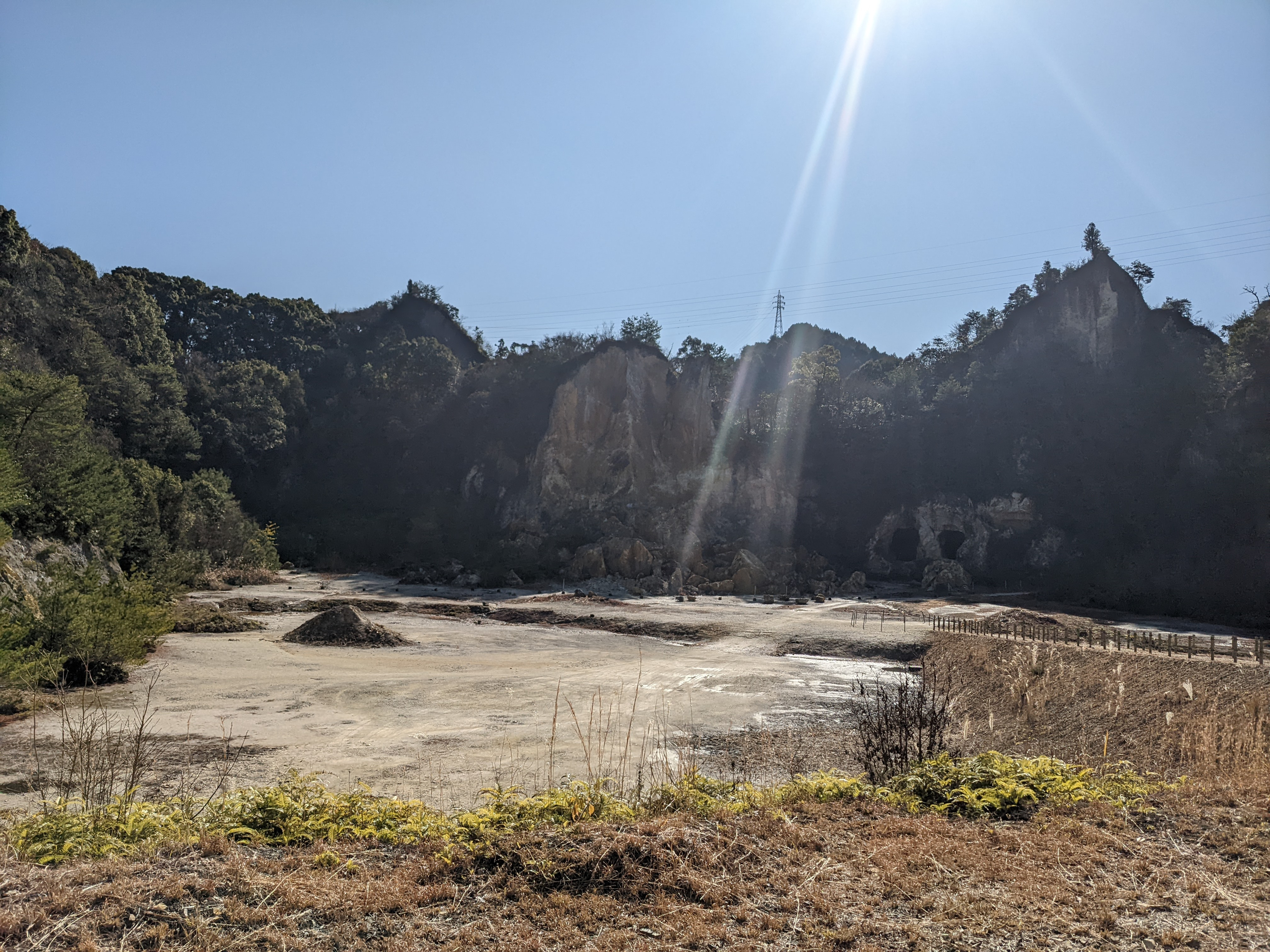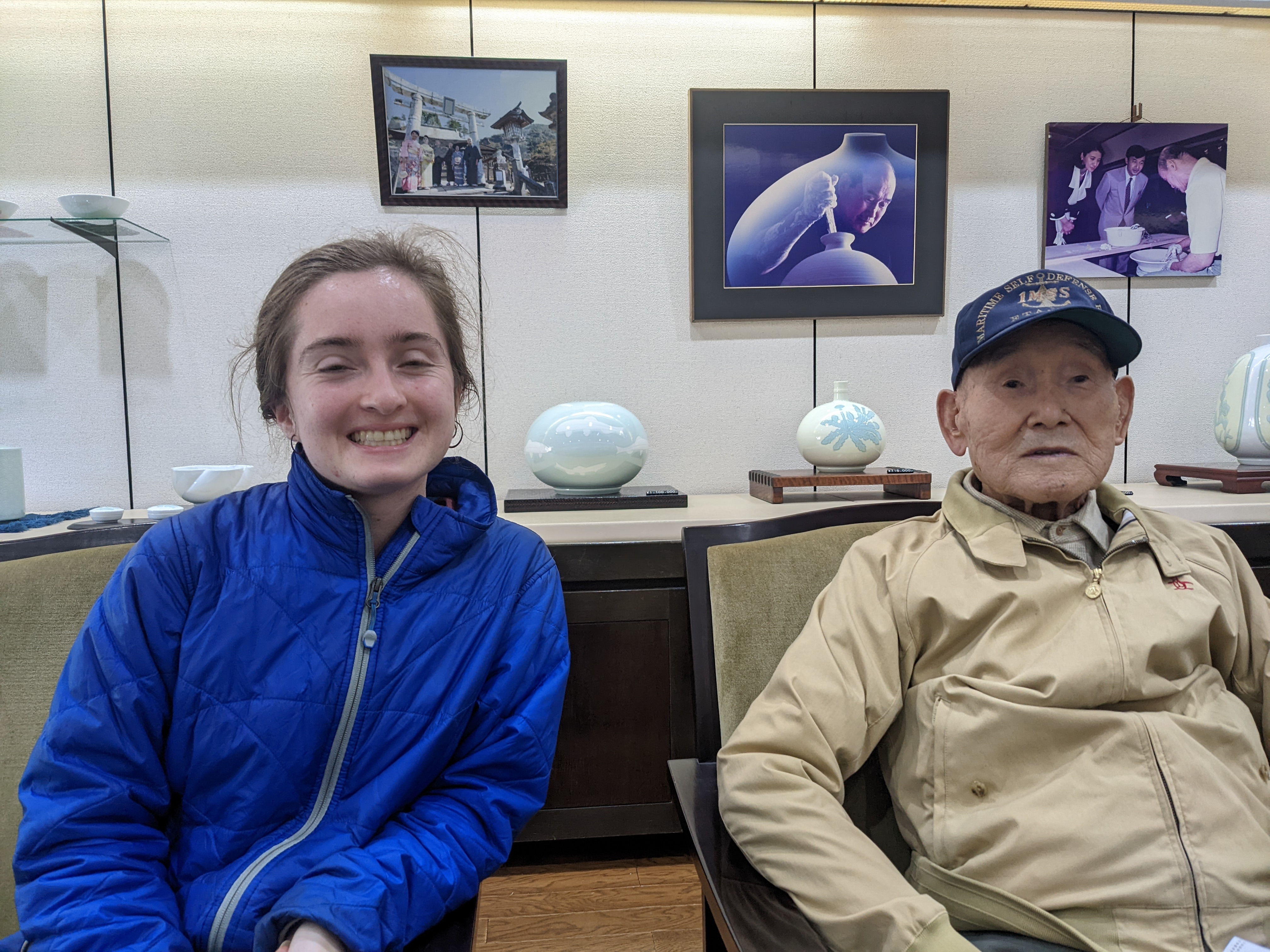The University of New Mexico’s Arita Porcelain Program, founded in 1980 by National Living Treasure Manji Inoue, continues the traditional process of creating Arita porcelain and serves as both a cultural and person-to-person connection between Japan and New Mexico.
Historically, art has served as the vessel for the exchange of ideas, connecting people across cultures. At first glance, Arita, Japan — a town in Kyushu’s Saga Prefecture — and Albuquerque, New Mexico may seem like unlikely partners. However, they share deep cultural and people-to-people connections through the art form of Arita porcelain.
This art form dates back over 400 years to 1616 when kaolin — a soft white clay essential to porcelain — was discovered by a naturalized Korean potter named Lee Sanpei — also referred to as Yi Sam-pyeong — in Izumiyama, Arita. Already possessing the ceramic infrastructure largely with climbing kilns, Arita quickly became the center of porcelain production in Japan. Through the nearby port at Imari, Arita porcelain ware was distributed across Japan. Despite Japan’s isolation period, Arita porcelain was also traded with Dutch merchants through Dejima, near Nagasaki, spreading pieces around the globe. Since then, porcelain has continued to flourish in Arita as artists committed to the traditional art form balance preserving the centuries-old techniques and aesthetics with modern innovation.

As for national efforts to preserve this tradition, the Japanese government passed the Law for the Protection of Cultural Properties in 1950. In 1954, the law was amended to include intangible cultural properties and their holders. Intangible cultural properties are defined as performing arts, craft techniques, or skills that are embodied and transmitted by specific individuals or groups.
These individuals or groups are designated as “Preservers of Important Intangible Cultural Properties” by the Ministry of Education, Culture, Sports, Science and Technology (MEXT) and are informally referred to as “Living National Treasures.” As of December 2022, there are currently 107 living national treasures, with a maximum of 116 holders determined by the budget. There have been 383 living national treasures in total. Manji Inoue, known as Inoue Sensei was designated at a Living National Treasure in 1995 for the importance of his contribution to the intangible cultural heritage of Japan through his practice of Arita porcelain.
Inoue Sensei was born in 1929 into a family of Arita potters but did not originally intend to become one. Instead, he dreamed of becoming a pilot and joined the Kagoshima Naval Air Corps at the age of 15. He was stationed at Kanoya, Kagoshima and then transferred to the town of Kushira where he remained until the end of the Second World War.
Returning to his hometown, he devoted himself to the art of porcelain. He trained at the prestigious Kakiemon Kiln as an apprentice and studied under the master potter Okugawa Chuemon I in the seventh year of his apprenticeship. He later studied clay, glaze, and design for thirteen years at the Saga Prefectural Ceramics Experiment Station — now known as the Saga Research Laboratory. While there, he decided to master hakuji — white porcelain — which demonstrates the beauty of pure porcelain. In 1970, Inoue Sensei founded his own studio.
In more recent years, in addition to making white porcelain pieces, he has experimented with new methods of expression including using carving patterns and colored glazes. Reflecting on his practice, Inoue Sensei said, “Across my whole life, I have created only white porcelain without any patterns. I am only human, however, so sometimes I feel like adding beautiful patterns.” Over the years he has passed on the process of Arita porcelain to many, including his eldest son, now passed, and his grandson Yuki. On teaching the process to others he also stated in an interview, “It’s hard to teach others. You need to be a ten to create pieces on your own, but you need to be a twelve or even thirteen in order to teach others. Creating pieces for the present while carrying on the techniques from the past. That is how tradition is passed on. You can’t advance if you continue to do things as they were. You need to continue to challenge yourself and nurture new talent.”
The University of New Mexico’s (UNM) Arita Porcelain Program’s history stretches back 43 years, owing its creation to a chain of personal connections. The chain began with Inoue Sensei teaching the art form to Kenneth Beittel, a professor from Penn State who wrote Zen and the Art of Pottery. One of Beittel’s students, Jim Srubek met Inoue Sensei in 1968 at Penn State. Inoue Sensei selected Srubek to continue studying in Japan under his tutelage and Srubek completed an intensive apprenticeship from 1979-80. Following his apprenticeship, Srubek established UNM’s Arita Porcelain program in 1980. Distinctly, it is the only program in the United States authorized to instruct in this art form.
Kathy Cyman, who currently runs the program, moved to New Mexico in the 1980s feeling a connection to the land’s Pueblo pottery traditions. In 1988, Cyman was introduced to the Arita porcelain process through a course taught by Srubek. Appreciating the regard for functional form and the emphasis on creative process, Cyman decided to continue studying the art form as a graduate assistant from 1991 to 1996. In 1996, Srubek took a group of students, including Cyman, to Japan on a ceramic exposition. The following year, Cyman was selected by Inoue Sensei to study in Takeo, near Arita, as an artist in residence. After completing her masters, she served as the program’s teaching assistant until 2001. Upon Srubek’s retirement, Inoue Sensei selected her to takeover teaching the Arita porcelain process at UNM.
Since its establishment, the program has introduced the art form to numerous students from a range of backgrounds. Some students are drawn to the program because of a pre-existing interest in Japan while others develop an appreciation for Japan through learning the art form. Cyman welcomes both students with previous ceramics experience and those who have never touched a potter's wheel before. In teaching the art form, she always tells students, “Art is a way not a thing,” emphasizing the importance of the process. Each step has a purpose and impacts the following steps.
When students first start learning they spend their time on only the first step, spiral wedging, which ensures that the clay does not have air bubbles. When students can wedge to Cyman’s satisfaction, they move on to learning how to throw small bowls. Unlike Western pottery practices, throwing is done in a clockwise direction and focuses on the inside shape of the piece. After throwing, students learn how to trim their bowls to match the outside shape with the inside. Before pieces can be fired, students must also throw and trim small disks that pieces sit on inside the kiln. The pieces are then fired twice, once before glazing and then at higher temperatures after glazing. Halfway through each class students take a tea break. Students bring snacks to share and use pieces made by previous students. These breaks build community and allow Cyman to pass on her knowledge of the process, its history, and the cultural significance of the program’s connection to Arita and Inoue Sensei.

Since the program’s inception, Inoue Sensei has visited UNM 12 times with his most recent visit being in 2017. Inoue Sensei has also gifted the university with several of his pieces, which are treasured by the program. Some semesters the students will take a trip to the UNM Art Museum to view one of Inoue Sensei’s vases that was gifted in the early 1980s. The program has also allowed students to visit Arita. Cyman has led groups of students to Japan in 2004, 2009, and 2016. In addition, five students have been sponsored as artists in residence to learn the practice in Arita. Several students have even been inspired to visit Arita on their own while traveling in Japan and were able to meet Inoue Sensei in person at his studio.

UNM’s Arita Porcelain Program serves as a unique cultural bridge, merging the artistic traditions of Arita, Japan with the diverse culture of New Mexico. The program not only preserves a traditional art form but also fosters a meaningful exchange of ideas and techniques. It stands as a testament to how art can connect seemingly disparate worlds. As students embark on the journey of learning this beautiful practice they encounter Japanese culture in an extraordinary way, blending tradition and innovation while celebrating the universal language of creativity.
Bettyjane Hoover is a Young Professional at the East-West Center in Washington. She is a graduate student at American University’s School of International Service, studying International Affairs with a focus on the Indo-Pacific region.